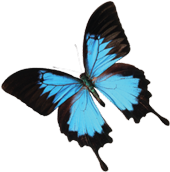Daintree Boardwalk

GALLERY OF THE GIANT FAN PALMS
The Gallery of the Giant Fan Palms is where you are surrounded by an array of giant fan palms all in the one place – a must see!
HIGHLIGHTS ON THE BOARDWALK
- Gorgeous Gallery of The Giant Fan Palms
- 500 year old Spur Mahogany tree
- Cycads
- Scrub Fowl Nest
- Bridge over a seasonal creek which we enjoy swimming in in the wet season
Come and take a walk on our boardwalk and be enveloped by these magnificent fan palms in all their glory.
Easy access (approx 10min walk) to the spectacular Grand Fan Palm Gallery Boardwalk.
Boardwalk entry is only $9.90 per person.
Children under 5 years old free entry.
Please pay at the organic wholefoods store counter.
About the daintree
- Out of the 16 primitive species of plants in the world, 13 are in the Daintree Rainforest.
- The Daintree Rainforest is the oldest rainforest in the world; even older than the Amazon rainforest.
- The Daintree Rainforest and the Great Barrier Reef are the only two Heritage Sites in the world to exist side by side.
- 65% of Australia’s bat and butterfly species and 35% of its frog, marsupial and reptile species can all be seen living here in this unique environment.
- The Daintree Rainforest is home to some extremely rare species, and in some cases it’s the only place where these animals can be spotted. Among the native animals are the cassowary, a relation of the emu; the Estuarine Crocodile; and the Musky Rat-Kangaroo, a small animal which half-hops and half-walks.
- More than 3000 plant species can be found in the Daintree Rainforest, whether that’s towering trees or colourful flowers. 395 of these are rare and threatened species, demonstrating the importance of the rainforest as an ecosystem including the gorgeous and grand fan palms.
- The Fan Palm can reach 20m tall. It has a single trunk, which is quite slender (around 20cm in diameter). But the species is most famous for its leaves. Each plant has 9 to 12 huge, segmented, pleated and almost circular leaves; they resemble a giant pinwheel or fan, hence their common name.
- The Fan Palm is endemic to (only found in) Queensland. It occurs in the north east of the state, in the Wet Tropics area: from Cooktown, south to Ingham. It’s typically found within 20km of the coast and from sea level to 1,100m. It forms a key part of the sub-canopy in rainforests, mangroves, littoral forests, vine forests and in riverine habitats.
- Fan Palm forests provide habitat for a suite of rare and threatened flora and fauna, including the Southern Cassowary, the Pied Imperial Pigeon and Bennett’s Tree Kangaroo. They also support vulnerable plants like the Layered Tassel Fern and the Freycinetia Percostata and provide outstanding wetland habitat, as they’re often seasonally inundated.
- The wet season is a time of food scarcity for cassowaries because not many plants fruit at that time. Fan Palms however do fruit throughout the wet season so they’re a particularly important food source for cassowaries.
Come and take a walk on our Grand Fan Palm Gallery boardwalk for just $9.90 per person. Please pay at our organic wholefoods store counter.

